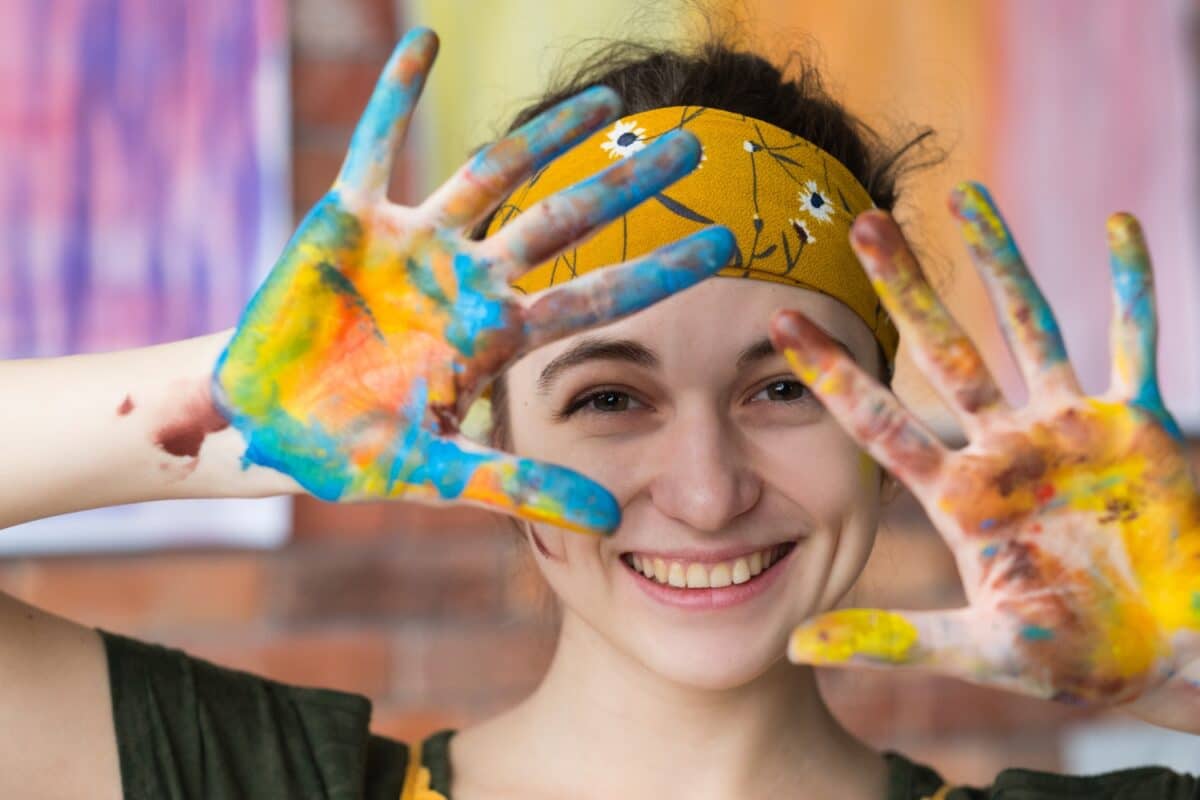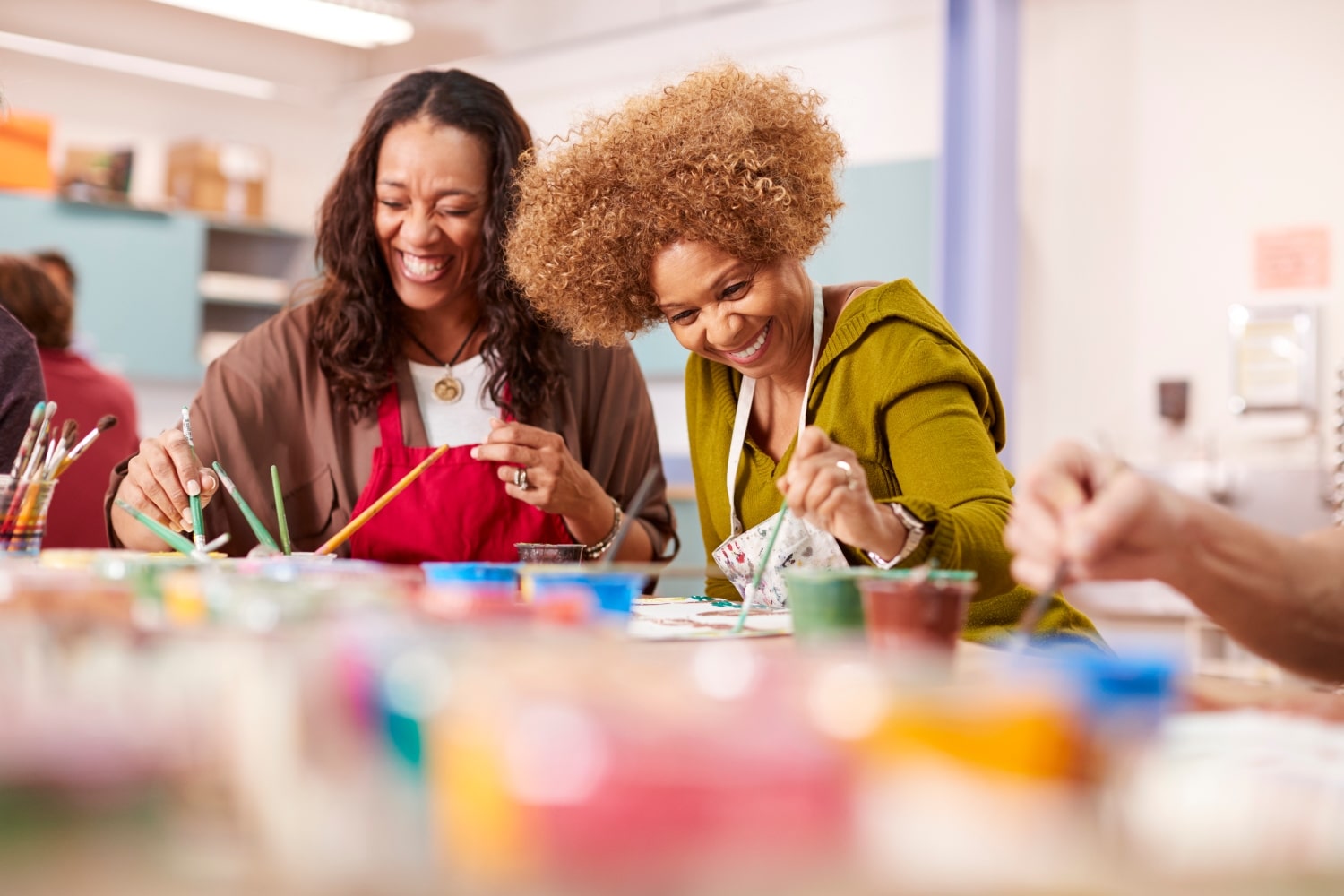Addiction research has come a long way over the years, and it’s still growing.
Today, we know that treating addiction is never a “one-size-fits-all” approach. What works for one client may not work for another. Traditional treatment methods, such as cognitive-behavioural therapy (CBT) and medication therapy, still work well. However, there is also a growing recognition of the value of incorporating creative therapies into addiction treatment programs.
From art therapy to music therapy and beyond, there are many unique avenues for mental health and addiction healing. Think of this article as your guide to how creative therapies can complement traditional treatment, fostering a more holistic path to authentic recovery.
Understanding the Value of Traditional Addiction Treatment
Before diving into how creative therapies are so effective in addiction treatment, we must first understand the value of traditional therapies.
Traditional therapy is used in addiction treatment for one simple reason: it works. Traditional therapy typically includes a combination of behavioural therapies, medication treatment, and participation in 12-step support groups such as Alcoholics Anonymous (AA) or Narcotics Anonymous (NA).
Cognitive-behavioural therapy (CBT) is effective because it helps people identify and change destructive thought patterns associated with addiction. Medication can be helpful for some people, particularly those medications that reduce cravings and withdrawal symptoms. Support groups will always be a cornerstone in recovery because they provide a sense of community for those in recovery.
Understanding the Value of Creative Therapies
Creative therapy is used to complement a traditional approach to addiction treatment. Creative therapy allows individuals to engage in artistic and expressive activities that promote healing.
Unlike traditional talk therapy, creative therapy taps into the innate capacity for creativity and self-expression allowing people to explore and process their emotions. Considering that understanding emotions is a significant challenge in recovery, you can see how creative therapies can be so effective.
Let’s take a closer look at some specific creative therapies.
Art Therapy

Art therapy involves using visual arts, such as painting and drawing, with the goal to express and communicate. Through the creative process, individuals can externalise their thoughts and emotions into something tangible—a painting or a sculpture.
The art therapy process isn’t about the finished result of a piece of artwork. Instead, the process is about what is happening inside the individual as they create something. Art therapy holds many benefits like gaining insight into experiences and developing new ways of coping with stress.
Music Therapy
Music therapy harnesses the power of music to promote emotional expression, relaxation, and communication. Whether through listening to music or playing instruments, individuals can access deep-seated emotions and memories through music therapy.
Music has the ability to calm and relax us. However, it also has the ability to evoke deep emotional responses, which can help process trauma and enhance self-awareness. The best part about music therapy is it can be used anywhere—from treatment centres to your day-to-day life.
Dance Therapy

Dance therapy (also known as movement therapy) integrates physical movement into the therapeutic process. An underlying principle behind this therapy is that the body and mind are interconnected.
Through dance and structured movement exercises, individuals can explore feelings and issues related to body image and self-esteem. Dance/movement therapy encourages people to reconnect with their bodies while releasing tension and trauma. This creative therapy allows you to access deep layers of emotional insight and self-expression.
Drama Therapy
Drama therapy isn’t something new. It originated in the 1930s to help people deal with anxiety and depression. Today, it is used in various therapeutic settings, including addiction recovery.
Drama therapy utilises role-playing and storytelling to explore and process emotions. Through dramatic enactment, individuals can step into different roles and perspectives to try and understand their thoughts and behaviours. Drama therapy provides a safe space for people to experiment with new ways of relating to themselves and others.
Writing Therapy

Writing therapy, known as expressive writing, is a powerful tool in addiction recovery. You don’t have to consider yourself a writer or good at writing for this therapy to be effective. In writing therapy, individuals in recovery are encouraged to journal their thoughts, feelings, and experiences related to their addiction.
Through writing, many will gain insight into their triggers, behaviour patterns, and underlying emotions that contribute to their addiction. Writing therapy provides a confidential space for people to explore their struggles and process complicated emotions. The goal is to gain clarity and develop coping mechanisms to navigate the ups and downs of recovery.
Benefits of Creative Therapy in Addiction Treatment
The benefits of creative therapies in traditional addiction treatment are plentiful. Research backs this up, although creative therapies are still being studied.
Here are some specific ways that creative therapy complements traditional addiction treatment approaches:
Regulating emotions
Most individuals struggling with addiction have difficulty verbally expressing their emotions. Creative therapies provide a non-verbal outlet for emotional expression, allowing individuals to express themselves through art, music, movement, or drama.
Reducing stress
Participating in creative activities can reduce stress and anxiety, which are common triggers for substance abuse. Creating art, making music, dancing, or writing can naturally promote relaxation and provide healthy coping strategies.
Feeling empowered

Engaging in creative activities can boost self-esteem and feelings of empowerment. As individuals see their artistic creations take shape, they gain a sense of accomplishment over their lives. This can translate into increased confidence in other areas, including addiction recovery.
Building coping skills
Creative therapies help people build new ways to cope with stressful situations, including triggers and cravings. By exploring different creative outlets, individuals can discover healthy ways to express themselves. They may find activities that they enjoy, like drawing or journaling, that they would have never discovered otherwise.
Connecting with others
Creative therapies often involve group activities, which provide opportunities for social connection. Sharing artistic experiences with others fosters feelings of belonging and camaraderie while reducing feelings of isolation and loneliness. While creative therapies can be done solo, doing them with others has its benefits, too.
Incorporating Creative Therapy into Traditional Treatment
Integrating creative therapy into traditional addiction treatment programs enhances the overall effectiveness of the recovery process. Here are some specific ways they can be integrated into traditional treatment:
Individual therapy
Therapists can use creative techniques through individual counselling to help clients explore their thoughts and feelings nonverbally. For example, a therapist may use art therapy to help a client visualise their goals for recovery.
Group therapy
Group therapy settings provide an ideal environment for creative expression and collaboration. Therapists can facilitate art, music, dance, or drama activities that promote teamwork and communication among group members.
Experiential workshops and retreats

Many addiction treatment centres offer experiential workshops and retreats that are specifically focused on creative therapy. These immersive experiences allow participants to fully engage in the creative processes and explore new forms of self-expression in a supportive environment.
Aftercare and relapse prevention
Creative therapy techniques can be incorporated into aftercare planning and relapse prevention strategies. Clients can learn how to use creative activities as coping mechanisms during stressful times to help prevent relapse and maintain long-term sobriety.
The Bottom Line
Creative therapy offers a valuable complement to traditional addiction treatment approaches, providing individuals with alternative avenues of self-expression and healing. Whether through art, drama, music, or other creative outlets, creative therapy engages individuals on body, mind, and soul levels, which is exactly how addiction should be treated.
While creative therapies are not new, they are being studied. Much of the research is published in the Journal of Music Therapy and the Journal of the American Art Therapy Association.
What White River Manor Offers
At White River Manor, we offer a range of creative therapies designed to complement traditional treatment methods. Our facility provides times and spaces for art therapy and music therapy, allowing clients to engage in expression and creativity while healing.
In our art therapy program, clients have access to various art supplies and materials to explore their emotions and experiences through painting, drawing, sculpture, and collage. The process of working with paint, clay, and fabric allows our clients to uncover deep-seated emotions that may hinder growth and recovery.
Our music therapy sessions incorporate two methods: the ‘receptive’ listening method and the ‘active’ method. The ‘receptive’ listening-based method means that clients listen to music, while the ‘active’ method is based on clients creating music and playing instruments. Both methods have proven effective in addiction therapy.
We integrate creative therapies into our programs because they work. They provide clients with alternative avenues for self-discovery while healing the mind, body, and soul.
If you or a loved one is struggling with mental health problems or addiction, call us today for a confidential conversation to see how we can help. You don’t have to go through this alone. We are here to help.







